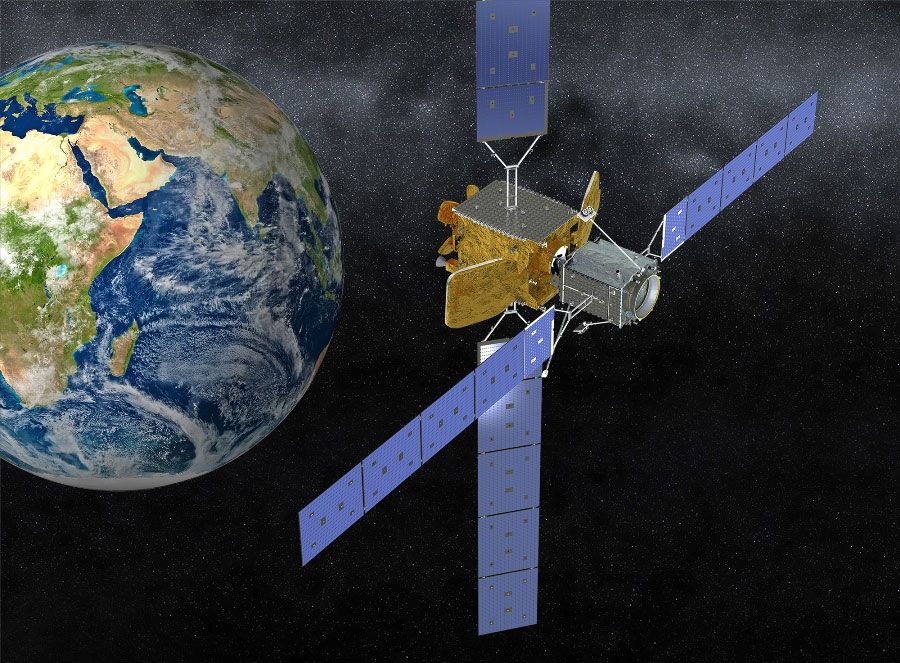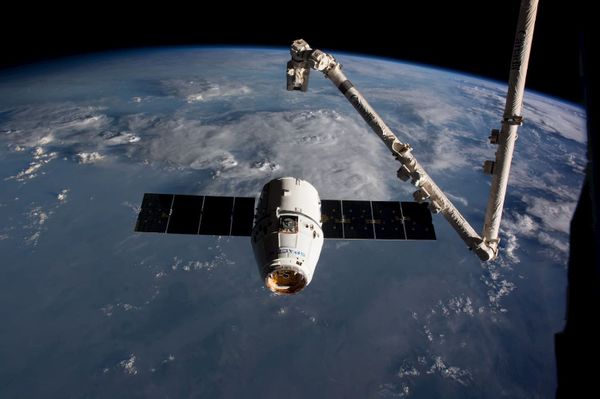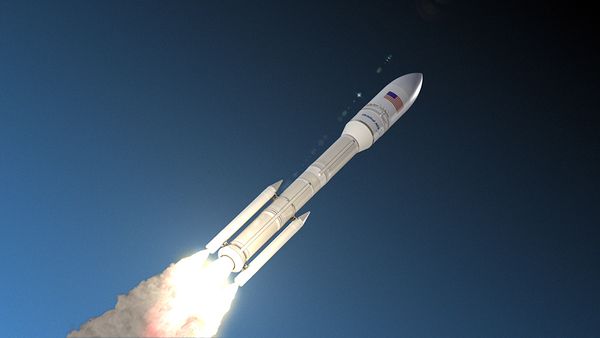The Mission Extension Vehicle docked with a customer satellite, providing attitude and stationkeeping control, via Orbital ATK
At Satellite 2018, Orbital ATK announced the Mission Robotic Vehicle (MRV) and Mission Extension Pod (MEP) systems. These two vehicles join the Mission Extension Vehicle (MEV) as part of Orbital ATK's satellite servicing company SpaceLogistics. How do these spacecraft work and what impact will satellite servicing have on the space industry?
Mission Extension Vehicle (MEV)
The MEV was originally announced in 2016. It is a satellite designed to extend the useful life of other satellites on-orbit. This includes stationkeeping, deorbiting, and repositioning old satellites. The MEV is designed to have a 15 year mission lifetime, and work with up to 2,000 kg host satellites. Lets' walk through the expected mission profile.
First, MEVs are designed for dual launch. This means the cost of launch can be split up between two spacecraft, reducing the cost to the end user. It is important to note that the MEV is an entirely self-contained satellite. That means it has its own liquid propulsion system to change its orbit, electric thrusters for stationkeeping, and Attitude Determination and Control System (ADCS) to navigate through space. Each MEV has two 10kw solar arrays. These power the satellite bus and also provide power to hosted payloads and the target satellite. Once on orbit, the MEV rendezvous with the target satellite and use its proprietary rendezvous system to line up with the satellite.
The MEV uses a unique docking system that leverages common elements on existing satellites to secure the two spacecraft together. On satellites with standard payload adapter rings, the MEV can attach itself to this physical hardpoint. However, many satellites do not have that connector. The MEV instead uses the Liquid Apogee Engine (LAE) of the spacecraft. Many Geostationary Orbit satellites are actually launched into Geostationary Transfer Orbit, and must make up 1,500 -1,800 m/s of delta-v to circularize into their final operating orbit. Some satellites use powerful liquid rocket engines to quickly raise their orbits. Once in operation, this engine is not used and instead the satellite uses small stationkeeping thrusters to maintain its precise position. The MEV inserts a probe into the throat of the LAE, using it as a grapple point to draw the two spacecraft together. Once the craft are together, the MEV takes over stationkeeping and pointing duties from the target craft. The system is also designed to be reusable, so if a customer contracts only a few years of servicing from the MEV, the MEV can detach and rendezvous with another customer for its remaining lifespan.
The MEV has several unique technologies to help it accomplish its mission. First up is the Rendezvous Proximity Operation and Docking (RPO&D) system. MEV has optical and laser-based sensors to detect and track the target satellite as it comes in for docking. This system is even able to adapt to moving targets, allowing for docking to satellites that may not have functional attitude control. Orbital ATK tested the software and sensors that make this system possible on the ground using a robotic arm testing setup.
Software and sensors guide the docking probe into the throat of the Liquid Apogee Engine (LAE), where MEV can securely dock.
Another key feature is the flexibility provided by the MEV bus for secondary payloads. The MEV has up to 5kW of power and 1000kg of mass available for secondary payloads. Payloads can be attached to the side corners, top or bottom of the MEV. This gives the MEV platform additional flexibility in-between satellite servicing, and helps offset the cost of launching dedicated MEV flights. We've talked about rideshares and small satellites in the past, and this system might provide even more opportunities for scientific and commercial payloads in space.
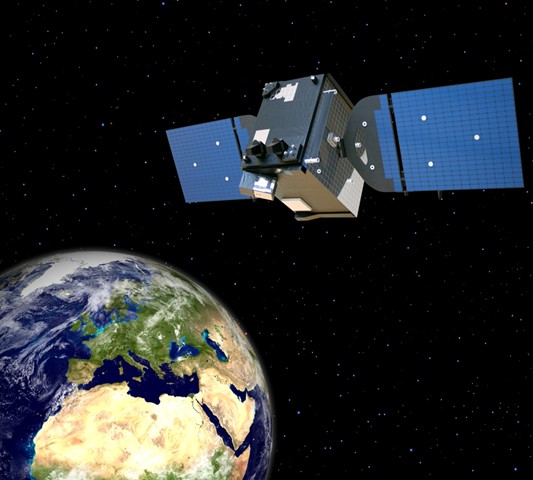
MEV share design and components from the GeoStar series of satellites, via Orbital ATK
The MEV is not all new technology. Its core structure is based of the GeoStar satellite bus, which means the MEV inherits some flight heritage from other Orbital ATK satellites. But Orbital ATK also sees MEV as its own platform that it can build upon going forwards.
Mission Robotic Vehicle (MRV) and Mission Extension Pod (MEP)
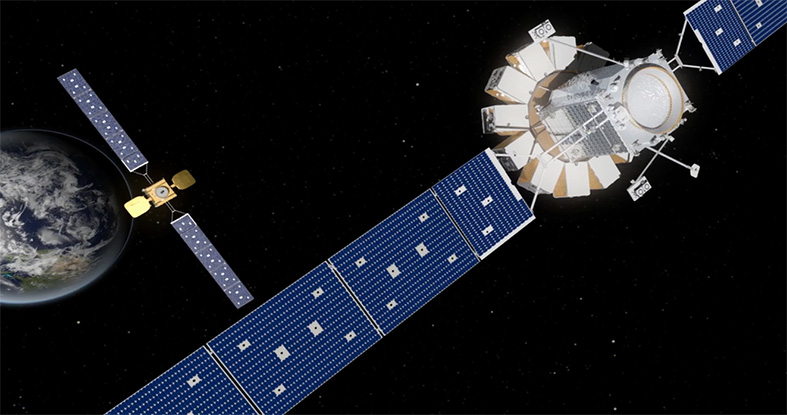
Rendering of the MRV with MEP pods attached, heading to a target satellite, via Orbital ATK
Orbital ATK announced the MRV at Satellite 2018, as a complimentary vehicle to the MEV. The MRV is based on the same design and technology as the MEV. It has the full capabilities of the MEV, with the same docking system and ADCS to control and recover satellites that do not have active attitude control. But the MRV has two unique features that dramatically changes the mission set. The MRV can carry up to 12 Mission Extension Pods (MEP). It also has a robotic manipulator arm, capable of installing MEPs as well as performing repairs and inspections of target satellites.
The MEP is like a miniature MEV in a box. Instead of taking complete control of a target satellite's attitude and stationkeeping, it is designed for satellites with functioning attitude control that could be extended with additional stationkeeping fuel. The MEP uses a xenon propulsion system and solar power to provide highly efficient and long-term stationkeeping. This aligns with a general trend in the space industry of switching to low thrust but highly efficient electric propulsion systems for stationkeeping from traditional hydrazine-based propulsion systems. .
Potential Impact
Satellite servicing has been proposed for decades, but MEV might make this industry a reality. MEV-1 is expected to begin testing this spring, with a planned launch in late 2018. MEV-1 will begin servicing SpaceLogistics’ first customer, Intelsat S.Am in early 2019. The first launch of MEV will be on an International Launch Services (ILS) Proton rocket. There will only be a single MEV launched onboard, instead sharing the ride with the Eutelsat 5WB satellite. This dual launch will actually be quite similar to future dual MEV launches, since Eutelsat 5WB is a GEOStar 2 satellite built by Orbital ATK. A second mission has also been ordered.
There has been a trend of increasing mass and increasing lifetimes for commercial communication satellites. Satellite servicing might be a method to provide the same advantages of long-lived satellites while reducing costs and initial launch mass.

